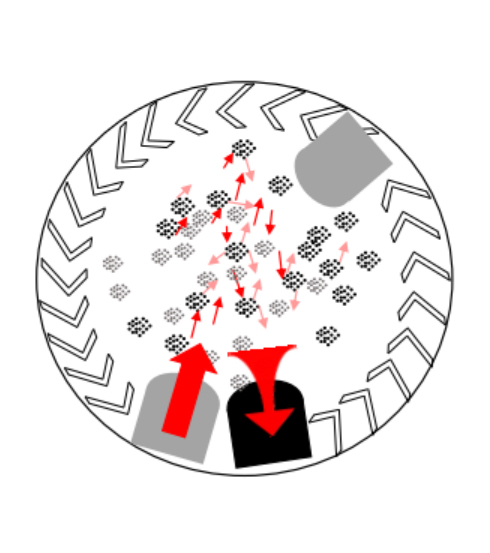
Introduction and difference between black and white smoke
When a fire occurs, particles will be produced at various stages of combustion depending on the burning materials, which we call smoke. Some smoke is lighter in color or gray smoke, called white smoke; some is very dark black smoke, called black smoke.
White smoke mainly scatters light and scatters the light that shines on it.
Black smoke has a strong ability to absorb light. It mainly absorbs the light radiation that shines on it. The scattered light is very weak and affects the scattering of light by other smoke particles.
The difference between white smoke and black smoke in fires is mainly reflected in three aspects: one is the cause of formation, the other is temperature, and the third is fire intensity. White smoke: The lowest temperature of the fire, the fire is not large, and it is formed by the steam generated by the water used to extinguish the fire. Black smoke: The fire temperature is the highest and the fire intensity is the largest. It is caused by the smoke emitted by burning objects containing too much carbon.
The difference between white smoke and black smoke in fire
Black smoke is incomplete combustion and contains carbon particles, generally with a larger molecular structure. Substances containing more carbon atoms, such as diesel and paraffin.
There are generally two types of white smoke. One is that it contains water vapor. On the contrary, it has a smaller molecular structure, more oxygen and hydrogen content, and is easier to burn to produce more water vapor. Second, there are white substance particles.
The color of smoke is related to the carbon content. If the carbon content is high, the more unburned carbon particles in the smoke will be, and the darker the smoke will be. On the contrary, the lower the carbon content, the whiter the smoke.
The alarm detection principle of smoke alarm sensing black and white smoke

Detection principle for white smoke smoke alarm: White smoke channel detection principle: Under normal smoke-free conditions, the receiving tube cannot receive the light emitted by the transmitting tube, so no current is generated. When a fire occurs, the white smoke generated Entering the labyrinth cavity, due to the action of white smoke, the light emitted by the transmitting tube is scattered, and the scattered light is received by the receiving tube. The higher the concentration of white smoke, the stronger the scattered light received.

Detection principle for black smoke smoke alarm: Black smoke channel detection principle: Under normal smoke-free conditions, due to the characteristics of the labyrinth cavity, the reflection signal of the black smoke channel received by the receiving tube is the strongest. When a fire occurs, The generated black smoke enters the maze cavity. Due to the effect of the black smoke, the light signal received by the emission tube will be weakened. When black and white smoke exist at the same time, the light radiation is mainly absorbed and the scattering effect is not obvious, so it can also be used. Normally detect the concentration of black smoke
Recommended smoke alarm


















